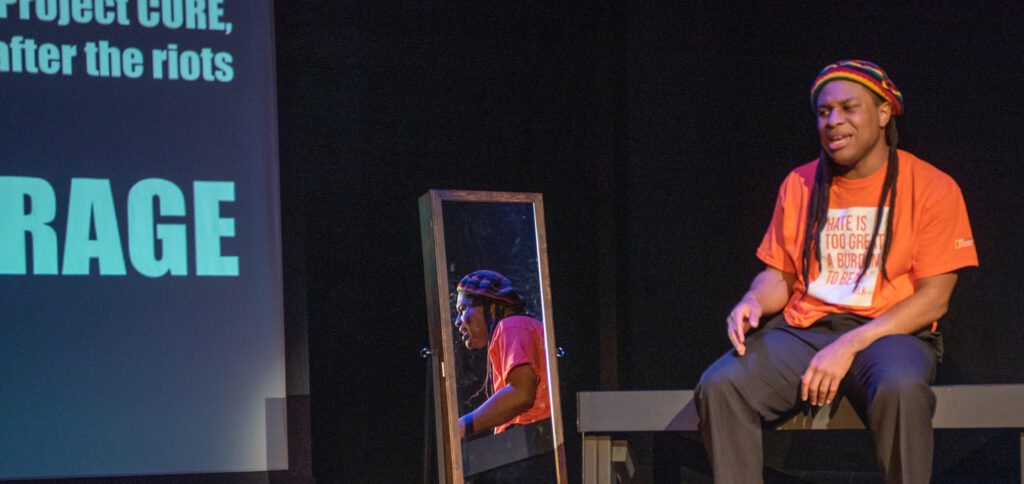“Theatre can’t save lives, but hospitals can,” my friend said to me with a smug look on her face, justifying her reasoning as to why the sciences are more important than the arts. I opted out of the debate because I had no examples to oppose such a bold claim. But, after viewing the Firehouse Theatre’s production of Fires in the Mirror, I would have to respectfully disagree.
Fires in the Mirror by Anna Deavere Smith is a beautiful work of art that captures the voices of various individuals after the infamous Crown Heights Riots dating from August 19, 1991-August 22,1991. Three days of street violence between the Black and Jewish community in Brooklyn, NY because of the sudden deaths/murder of Gavin Cato, Angela Cato, and Yankel Rosenbaum. The performance beautifully allows individuals to share their stories without twisting their words to please the audience, which can be difficult considering how theatre is a form of entertainment. Regardless, Firehouse Theatre’s Fires in the Mirror was successful because it accomplished its goal to reveal individual experiences and stories, which has the potential to save many lives.
The performer, Jamar Jones, did a spectacular job at literally and metaphorically clothing himself with the distinctive personalities shared with Anna Deavere Smith. All the character’s voices were honored and respected as equal to the other participants so that we, the audience, could decipher the many interpretations of the Crown Heights Riots. And the contributors who helped put this story together might have helped save the lives of those who lost loved ones like Gavin Cato, Angela Cato, and Yankel Rosenbaum. Sometimes, nothing is better at curing a broken heart than an open ear, especially when that individual’s community has been silenced for years. So, considering the past tragedies caused in both the Black and Jewish communities, we learn through this production that someone’s voice could be the only value they hold.
A neat technical element a part of the performance was the projections that introduced Jamar Jones’ speaking roles and the news recordings of the Crown Heights Riots. Although the projections introducing all of the various characters were helpful to know who Jamar was performing, I thought the news recordings were way more engaging. With not a lot happening on the stage, it was easy to get distracted and lose interest, but the news videos brought the story back to life for me. In addition, I think it heightened the stakes because I was reminded the riots were an actual event in history, not some fictional story. Which, in turn, caused me to sit up and lean a tad bit forward whenever it was time for Jamar Jones to speak again.
Now, a metaphoric event occurs at the end of the play where Jamar Jones takes the mirror that’s been accompanying him and reflects the overhead lights on the entire audience. Assuming this creative technical design was the director’s choice, during our talkback I asked Katrinah Carol Lewis about the intention of such a beautiful moment. However, she redirected the question back to me, asking, “What was the intention for you?” After pondering for a few seconds, I concluded that the only voice that matters is the one that lies deep within. Throughout the entire performance, we encounter so many different opinions of people we’ve never met. And each individual’s perspective is valid regardless of our background and experiences. For example, the only ones I cared to learn from were the close family members who lost Gavin, Angela, and Yankel. But someone else viewing this show will have a completely different point of view and maybe think that it’s essential to hear from everyone who was affected somehow during the riots in 1991.
However, even though some scenes were less exciting and engaging than others, the overall performance was a great lesson. Fires in the Mirror’s main objective is not to entertain but to inform about an important event in history and the experiences that peeked through the cracks of such a tragedy. And consequently, the show gave me more hope that humanity can learn to grow together despite our differences. And yes, it’s not the hands of a skilled doctor, but even they must have some hope to save a life.



